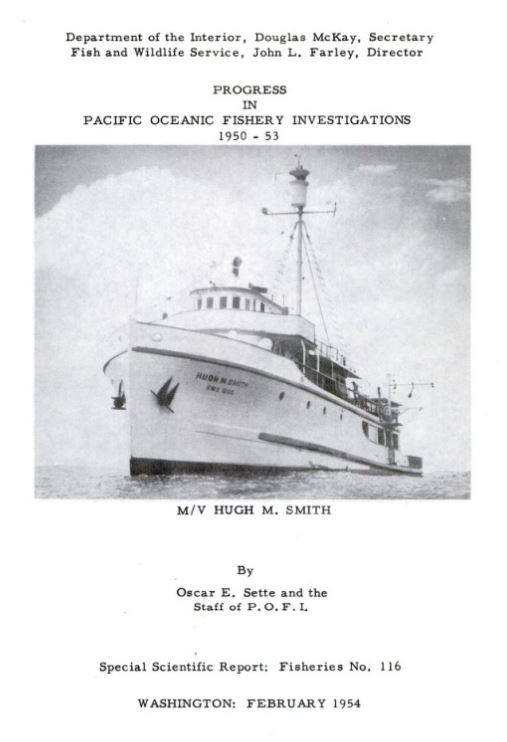
Dr. Wilbert McLeod Chapman, University of Washington Special Collections.
I’m feeling a little pompous for having grandly announced I’m writing again, and certainly on something predictable, at least for me. I am trying to make my work more accessible, because it is important to have new stories about the natural world and the linkages between people, fish, and oceans.
I intend this book to tell a story of how fishery science developed in the Pacific Ocean. I know this will strike some people as very parochial; Sidney Holt has told me many times my work needs to be more integrated to into Atlantic fishery management.
But this Pacific story interests me a lot more, I think because so little of it is known, and it is such a complex and multi-layered story that needs to be discovered. Development in the Pacific was fast, fisheries starting and crashing with a decade (soufin sharks.)
This is material I have explored several times before. But I have a new set of questions to ask, and a desire to make some new connections with the research I did in graduate school. One reason this is important is that we lack foundation stories in many of the sciences, how the science was created and shaped, and the assumptions that were built in
Broadly, I am still interested in how American foreign policy continued to shape fisheries science after 1945, with the establishment of the Pacific Oceanic Fisheries Investigations, established in Honolulu, the conduit for Japanese oceanography research to be incorporated into western science.
In a 1944 joint resolution, Congress had directed the U.S. Fish and Wildlife Service to survey the extent and condition of all marine and freshwater fishery resources, including the “high seas resources in which the U.S. may have interests or rights.”[i] In a report to Congress in February of 1945, Harold L. Ickes (1874-1952), the Secretary of the Interior between 1933 and 1946, wrote that Americans had to “take intelligently the leadership in world aquatic industries that seems about to be thrust into its hands.”[ii]
With the end of the war, Congress expanded on its 1944 resolution to expand
American fisheries deeper into the Pacific, both for tuna, but also for king crab and bottomfish in Alaska. Our colleague Bob Hitz has written extensively about these early research efforts.
My story starts in the 1930s, following three scientists, William F. Thompson, and three of his students, Wilbert McLeod Chapman, Milner B. Schaefer, and, a decade later, Bell M. Shimada, who are all at the University of Washington’s School of Fisheries in Seattle. It is the Depression, a very difficult time for all, but especially for fishermen who could not find markets for their fish. Thompson was director of the School of Fisheries; the position was part-time and paid $2,000 a year.
As always, I will be using the blog to share interesting tidbits as I come across them, as and to try to make connections with my prior work. We’ll be doing some reorganization as well, so thanks for hanging in with us while we houseclean.
[i] Harry N. Scheiber, “Pacific Ocean Resources, Science, and Law of the Sea: Wilbert M. Chapman and the Pacific Fisheries, 1945-70,” Ecology Law Quarterly, 13 (38), 383-534, 394.
[ii] “Fishery Resources of the United States,” Letter of the Secretary of the Interior, March 1, 1945.
























